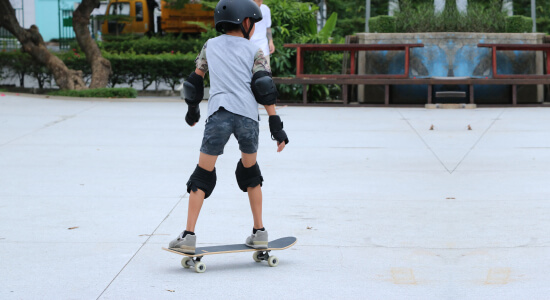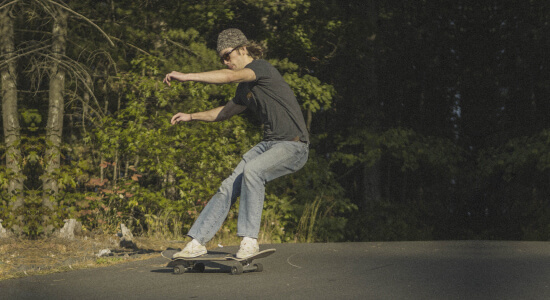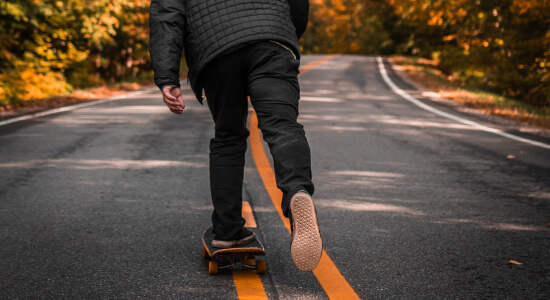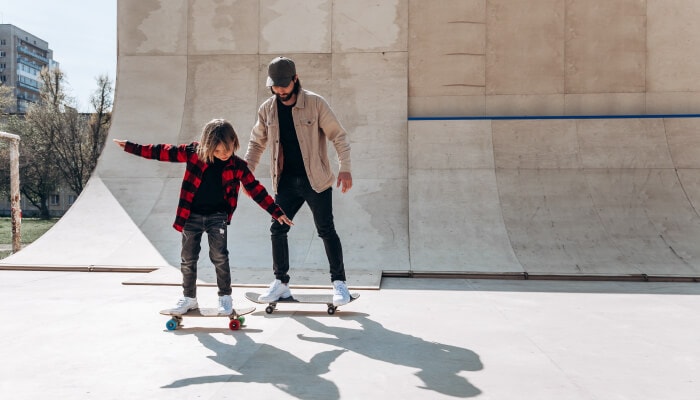Skateboarding: it’s more than just a sport; it’s a heart-pounding, adrenaline-fueled adventure that can take you places, both physically and mentally. Whether you’re a newbie eager to roll into this exhilarating world or a seasoned rider looking to fine-tune your skills, there’s one crucial element that’s fundamental to mastering the art of skateboarding – balance.
To truly savor your skating moments and ensure your safety on the board, you must understand and harness the power of balance and control. That’s where this comprehensive guide comes into play.
This article will explore the intricate techniques and invaluable tips to boost your balance and enhance your foot positioning and stopping abilities. It’s the roadmap to skateboarding mastery, a journey that promises effortless navigation on your trusty skateboard.
So, get ready to embark on an exciting journey of self-discovery and improved skateboarding prowess.
Mastering Foot Positioning for Balance and Control
Foot positioning is crucial for maintaining balance and control while skateboarding. It determines your ability to turn, balance effectively, and execute tricks. Understanding the correct foot placement is the first step towards mastering the art of skateboarding.
Proper Foot Positioning When Standing on the Deck
Your feet should be placed 50–90 degrees off the skateboard’s midline when you are standing on it. Imagine the centerline as a line that cuts through the middle of the board from the nose to the tail.

The ideal foot placement involves your toe touching the rail on one side of the board and your heel touching the other, with the middle of your foot over the centerline. This positioning provides optimal leverage for turning and maintaining balance. It also ensures that the weight distribution is centered, allowing for better stability.
Beginners often need to correct the mistake of placing their front foot in awkward positions, such as keeping it straight or off the centerline. These positioning errors can lead to difficulties in balancing and controlling the skateboard. You can easily maintain stability and execute maneuvers using correct foot positioning.
Proper Foot Positioning When Pushing
When it comes to pushing, it’s essential to have your lead leg (front leg) positioned over the centerline of the deck in a straight or slightly angled position towards the nose. This placement ensures balanced weight distribution and facilitates smoother pushing motions. Avoid placing your foot too far to the left or right of the centerline, as it can cause the board to turn in that respective direction, making pushing feel awkward and unsteady.
Finding the Right Balance on Your Skateboard
Achieving the right balance on your skateboard is essential for maintaining stability and executing maneuvers confidently. Here are some tips to help you find the perfect balance:
- Focus your weight on your front foot/lead leg: Many beginners tend to put too much weight on their back foot, causing the board to shoot forward and fall. To maintain proper balance, visualize putting more pressure on your front foot. Lean into your leg and slightly bend it to ensure that enough weight is placed on it. This forward-leaning posture, often called the “battle stance,” helps you maintain control and stability.
- Shift your weight distribution: As you gain more experience, you’ll learn to shift your weight distribution to adapt to different situations. For instance, when turning, you may need to shift your weight towards the direction of the turn to maintain balance and control. To achieve the best balance, experiment with distributing your weight between your front and back feet.
- Practice one-legged balance exercises: Building strength and balance in your legs is crucial for maintaining stability on a skateboard. Incorporate one-legged balance exercises into your routine, such as standing on one leg for extended periods or performing squats on a balance board. These exercises will help improve your overall balance and stability, making it easier to maintain control of the skateboard.
Stopping Techniques for Safety and Control

Knowing how to stop effectively is crucial for your safety and those around you. Here are some essential stopping techniques to master:
Carving
Carving is a technique where you make deep turns to the left and right, increasing the travel distance of your board and gradually reducing your speed. You can slow down and control your speed by leaning into the turns and shifting your weight. However, carving alone may not bring you to a complete stop, so it’s essential to combine it with other stopping techniques.
Footbraking
Foot braking is a controlled method of slowing down and stopping your skateboard. To footbrake, place your back foot on the ground, using the friction between your foot/sole and the ground to reduce your speed. Here’s how to execute a footbrake:
- Shift your weight over to your front foot.
- Position your front foot facing 12 o’clock (or at an angle of 0 degrees to the centerline).
- Gently lower your back foot, allowing your heel to contact the ground.
- Gradually increase pressure on the ground to slow down.
- Remember to keep the weight on the foot on the board to maintain balance.
- Once slowed down, lift your back foot and shift your weight onto the board.
Footbraking requires practice to develop the necessary balance and control. Start by practicing off the board, focusing on lowering yourself on your lead leg. Gradually incorporate foot braking into your skateboarding sessions, and you’ll become more confident in your ability to control your speed.
Pushing Techniques for Speed and Control

Pushing is an essential skill in skateboarding that allows you to gain momentum and maintain speed. Mastering proper pushing techniques will enhance your overall control and efficiency on the board. Here are some tips for pushing effectively:
- Push with your back leg: Use your back leg to generate forward momentum. Avoid pushing with your front leg, a technique known as “mongo pushing.” Pushing with your back leg ensures better balance and control, as your front leg remains on the deck, ready to maintain stability.
- Keep your front foot straight: Position your front foot in a straight or slightly angled position on the deck, similar to the foot positioning discussed earlier. This alignment allows for a more natural and powerful pushing motion, maximizing your speed and control.
- Focus your weight on the leg on the deck: When pushing, most of your weight should be on the leg that remains on the deck. It helps maintain stability and control during the pushing motion. The pushing leg should be free to propel you forward without bearing excessive weight.
Troubleshooting Common Skateboard Issues
Skateboarding can sometimes present challenges, but with the proper knowledge, you can overcome them. Here are some common problems and their solutions:
My Deck Turns on Its Own
If you find that your skateboard trucks lean or turn on their own, it may be due to a manufacturing defect or worn-out bushings. Upgrading your trucks or bushings can resolve this issue. Worn bushings or low-quality trucks can hinder your ability to control your skateboard. Updating your bushings or investing in high-quality trucks can improve your skateboard’s responsiveness and overall performance.
My Skateboard Turns Too Much
If your skateboard turns excessively, it may be due to the stock bushings that come with your trucks. Stock bushings may not be suitable for your weight and riding style. Consider upgrading to aftermarket bushings that provide a stiffer and more stable feel. Bushings come in different durometers (hardness), and the choice depends on your weight.
Heavier riders will benefit from stiffer bushings, while lighter riders may prefer softer ones. Additionally, tightening your trucks can affect the performance and lifespan of your bushings, so it’s generally not recommended.
Conclusion
Balancing and controlling a skateboard is a skill that takes time and practice to master. You can improve your balance and control on the board by understanding the fundamentals of foot positioning, weight distribution, pushing techniques, and stopping methods. Remember always to prioritize safety and gradually challenge yourself to push your limits.
With dedication and perseverance, you’ll become a confident and skilled skateboarder. So grab your board, hit the pavement, and enjoy the thrilling journey of skateboarding!
